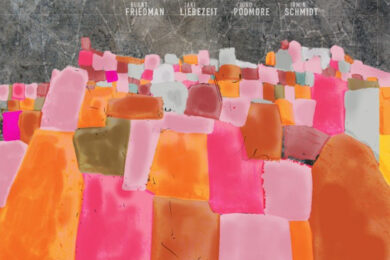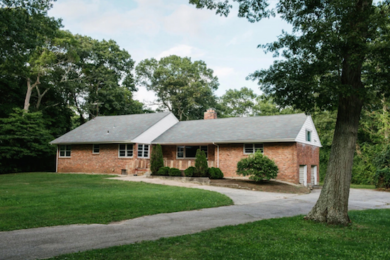There is a danger in consigning a geographical girdle to an artist’s output, the relentless tendency toward defining a city’s ‘sound’ proving no more useful than, say, the music journalist’s penchant for intellectualising an artist’s tics. No more so than when it comes to Manchester, whose speculative sound is mythical in status – a status not simply content to evoke riffs, tones and working-class politics, but one that by its very nature is finite. Nostalgia for the golden age of Manchester bands – The Smiths, New Order, Magazine, Joy Division, The Fall – demands that new artists perform a wistful homage (vintage, classic) or risk operating beyond the popular canon of hometown heroes.
In Hinterland, the follow-up to 2010’s Nerve Up, LoneLady’s Julie Campbell has created a thoroughly modern record that doesn’t simply nod to its forebears in its zeal for an analogue approach to recording, or the self-evident groove of A Certain Ratio’s basslines. No. Here Campbell is riffing on the myth of Manchester itself, revelling in revealing – rather than breaking down – the fourth wall. Influences are worn playfully – a lick here, a beat there – and processes are revealed. "Put a record on/make a connection," she sings in ‘Bunkerpop’, a self-reflexive treatise on the genesis of the album, the very act of creativity as Campbell’s subject. Walking through the city, treading the familiar ground of post-punk desolation, she seeks out the scars her idols have scorched on the city, exploring how these post-industrial histories – indeed, very few herstories – form a perceived Northern psyche. "I feel you here right in the hollows", she sings. "You can’t stop this Bunkerpop".
Yet, as with Nerve Up, it is Campbell’s ability to manipulate her influences that elevate her work beyond garden-variety synth-pop. LoneLady’s Manchester is not solely one of Ian Curtis and The Buzzcocks. Rather, it is one of familiarity, exploration and footsteps – one where miles of forgotten towpaths and grey rubble have passed beneath her feet: the echoing cymbals and distorted guitars on ‘(I Can See) Landscapes’ recalling the pulse and grind of factory life; the whirs and clangs on ‘Into The Cave’ channelling the metallic chug of railway lines. You get the sense that Campbell carries a dictaphone with her everywhere, recording ambient sounds and industrial samples which she will later weave into slick pop songs (in one interview, she admits that the rats sharing her studio make an appearance on the record). Compounding this ambulatory mood is the over-arching tempo of the album – varying speeds of a walking pace, syncopated with a heartbeat – as though we too have stepped over the fourth wall, and are moving through the city with Campbell. No doubt, this is what lends her work its distinctively cinematic, transformative quality.
Hinterland is indeed a body of work with a sense of propulsive forward-motion, not least due to Campbell’s marked evolution since her debut album. Where Nerve Up was taut and clipped, Hinterland is expansive and rich – a masterclass in textures and layering. The more experimental moments – ‘Flee!’ is perhaps her biggest departure from form, the discordant cello and soft, breathy vocals calling to mind Kate Bush and even Biophilia-era Bjork – hint at Campbell’s huge potential, while the more familiar-sounding tracks – 80s-inspired ‘Groove It Out’ is essentially ‘Intuition’ mark 2 – remind us of just how skilled a pop performer Campbell is. Album closer ‘Mortar Remembers You’ has touches of the Eurythmics about it, with its irreverent "ooh-ooh-ooh"s, where ‘Hinterland’ employs a distinctly funk-driven groove.
Hinterland is playful – a vibrant and urgent combination of genealogy and vision – and it is this that truly makes it a masterpiece. Not only does Campbell have the creative chops to create such richly evocative music, but she does it with a wink and a smile. This is a far more produced record – slicker and more experimental – than Nerve Up, but rather than merely being a successor, Hinterland feels like a thesis on Manchester and its musical lore. By simply adding the rhythm of her shoes hitting the pavement, she’s transformed a nostalgic archive into tightly executed, profoundly new, dance music.
<div class="fb-comments" data-href="http://thequietus.com/articles/17500-lonelady-hinterland-review” data-width="550">













